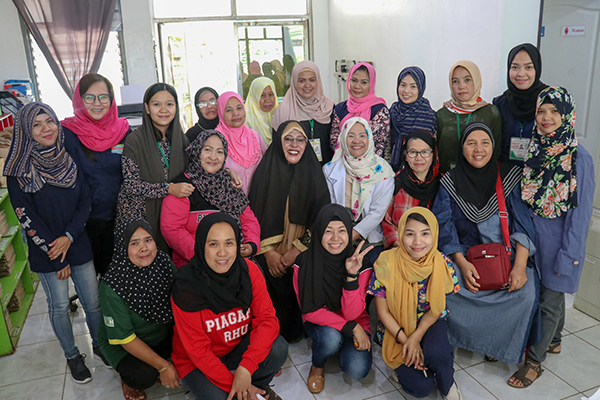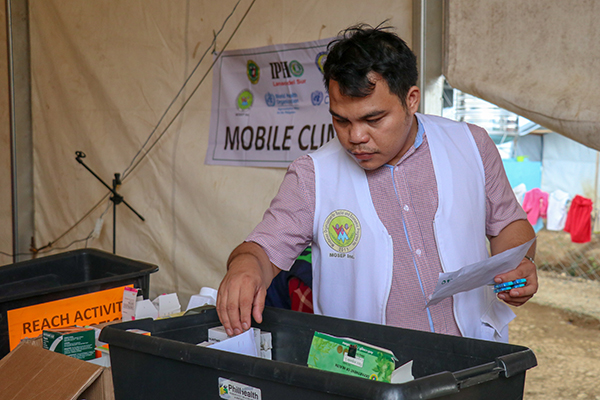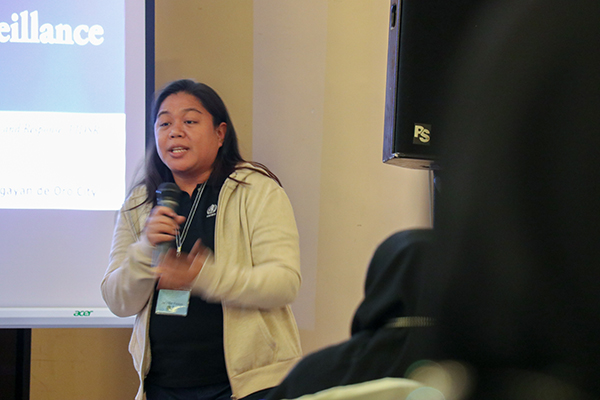It’s been over a year since the Marawi conflict erupted on 23 May 2017. Throughout the five months of the conflict between the Philippine Government and non-state armed groups, over 350,000 people fled to evacuation centers and host communities in nearby municipalities. Since then, thousands still remain displaced and in need of basic health services.
On World Humanitarian Day, we talked with health workers who are on the ground helping those who have been affected by the Marawi conflict.
Dr Rasmia Lawi
Municipal Health Officer, Municipality of Piagapo, Lanao del Sur

During the siege, it was a challenge for us health workers. It was difficult traveling in and out of the affected communities. When it happened, I wasn’t at the rural health unit; I was at my hometown of Balindong. Right after the siege, it was really difficult to come here. There are times when I couldn’t pass through the checkpoints, so I would just render my services at the Balindong Municipal Hospital or the satellite clinic at the Provincial Capitol.
When I remember the situation at that time, it really makes me cry. When I was at the Balindong Municipal Hospital, there was a 13-year old boy who got trapped during the siege but survived that ordeal. After he was rescued, he got diarrhoea and was brought to the Balindong hospital and given IV fluids. After an hour, he could still talk but then he lost his life. That was really heartbreaking! He did not die from a bullet but from diarrhoea.
Here in Piagapo, our clients increased. We used to have around 60 clients every Wednesday, which is our most busy day. During the conflict, every day was busy day. We had over 100 consultations and some got admitted here for dehydration, diarrhoea, and bronchial asthma. Our rural health unit operates 24/7 so our services were continuous even before the siege up until now. It is very tiring but we are also thankful that we have the strength to help out. I’m very grateful and proud of my staff here. They never left the rural health unit and continued to render services to the people affected by the siege.
Muamir Alingan
Field Coordinator, Mindanao Organization for Social and Economic Progress, Inc. (MOSEP)

Since last year, MOSEP has been the implementing partner of WHO under the CERF project where we provide mobile health services to patients. Last year, we dispensed medicines and provided health promotion services going house-to-house and barangay-to-barangay. Now, we provide a different type of help by supporting the Marawi City Health Office’s doctors and staff through logistics support such as vehicle needs, meal allowance, among others.
I wasn’t displaced by the conflict but I could see the tough situation of those who were displaced. Sometimes they have to go far so they could find food for their family. Sometimes they have to wait for relief goods from the government or other organizations. For health practitioners that were affected, it was also a difficult situation for them because they continue to give health services to those displaced despite being displaced themselves.
I’m glad that in our own way, we are able to assist the displaced population with their health problems. We were able to help by bringing the health services closer so that they don’t have to go far to seek these services. I feel good and happy that I am able to give services to them.
Jennifer Pelayo
Information Management Officer, WHO Philippines

There are still many internally displaced people who have not been able to come back and rebuild their homes, particularly those from the Ground Zero. My work is mainly ensuring that the right information reaches the right people at the right time. This consequently helps in providing the support that the local government needs as it continues to deliver mobile health services to the community, most especially those who are still displaced.
During fieldwork, we make sure to follow security protocols so as not to put ourselves in danger. But there are just so many things that we cannot control and whether consciously or not, we accept the possibility of being caught in conflict. Whether civilians or aid workers, bullets inevitably make no distinctions. Despite this, I am so proud of the health workers who have committed to providing services even under the most dangerous situations.
The work here goes on. Each agency is trying to fill in the gaps that are still present. I hope that those affected by the conflict, from health workers to the community, live a more peaceful life and that their healing continues.
